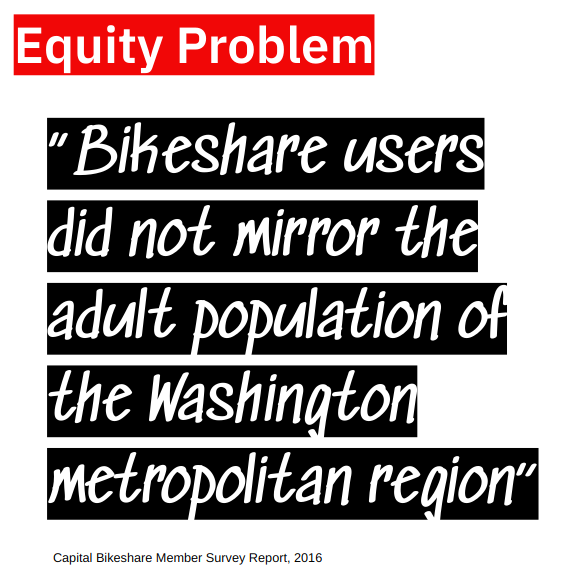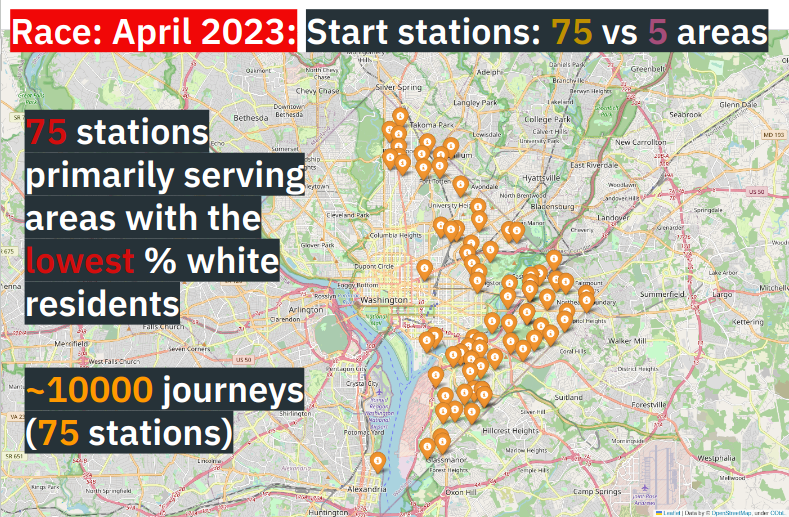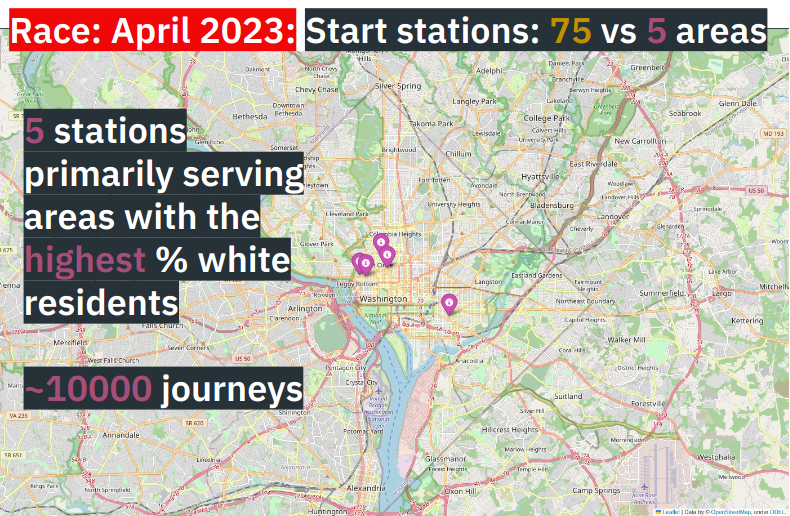Captial Bikeshare - Ridership equity
Captial Bikeshare (CB) is a public-private company in, Washington DC, with a commitment to inclusivity as part of its mandate.
Project Goals
- Assess performance on ridership diversity goals set by CB
- Develop new KPIs and make predictions
Method
- Use geographical demographic information to cross-reference with journey start/end points
- Analyze trips based on residential demographics
About the data
Trip Data
Caiptal Bikeshare trip data for April 2023. The data includes:
# Column Non-Null Count Dtype
--- ------ -------------- -----
0 ride_id 389243 non-null object
1 rideable_type 389243 non-null object
2 started_at 389243 non-null object
3 ended_at 389243 non-null object
4 start_station_name 360858 non-null object
5 start_station_id 360858 non-null float64
6 end_station_name 358630 non-null object
7 end_station_id 358630 non-null float64
8 start_lat 389243 non-null float64
9 start_lng 389243 non-null float64
10 end_lat 388555 non-null float64
11 end_lng 388555 non-null float64
12 member_casual 389243 non-null object Source: https://capitalbikeshare.com/system-data
Notes:
- Excludes staff testing trips, and any trips lasting less than 60 seconds (potentially false starts or ends).
- Dockless bikes and e-scooters (i.e., potentially without a named start or end station) are included after a certain point.
Cleaning:
- Exclude trip data outliers (improbable or impossible real-world conditions such as very long or negative durations)
Demographic data
American Community Survey (ACS) 2022. Source
Processing steps:
- Extract census tracts within DC, exclude census tracts with under 1200 population as non-residential and/or tourist areas
- Find the proportion of white (‘Race: One Race: White’) residents per census tract
Combine data
- Find the two bikeshare stations closest to the center of each tract
- Compare trip data from stations serving areas with the highest and lowest proportion of white residents
- Adjust data to allow comparison between the two groups studied (to capture 10,000 rides it took 5 stations in areas with the highest proportions of white residents, whereas it took 75 stations in areas with the lowest proportions)
Findings
- Fewer trips to and from stations not in predominantly white areas
- Fewer stations
- Shorter trip durations (inferred from net km)
- Few changes in marketing/public information policy despite research into demographic reach
Recommendations
- Extend use of regression model with feature importance investigation to predict where new stations will have most impact
- A/B testing of marketing/public information strategies based on new combined dataset
- Resume user monitoring


